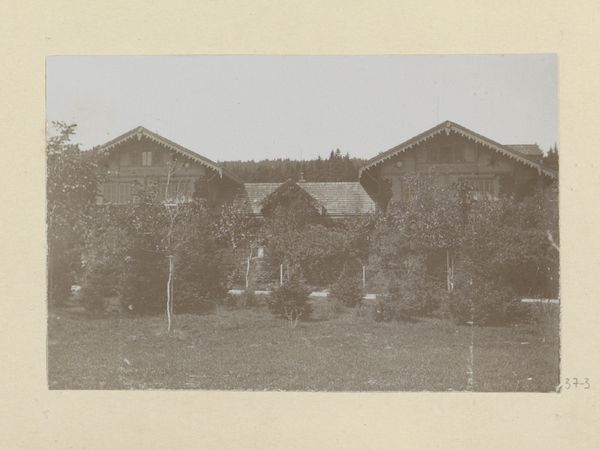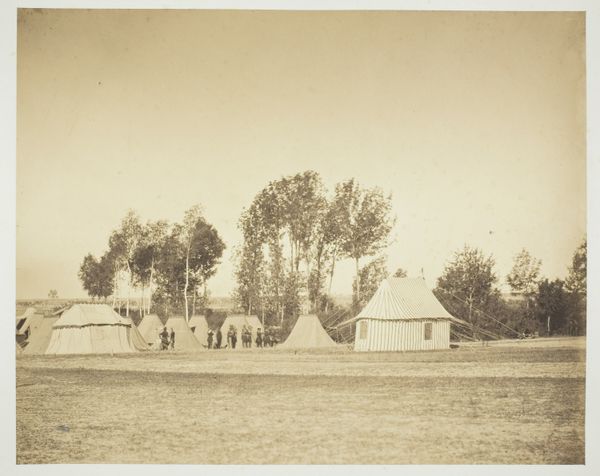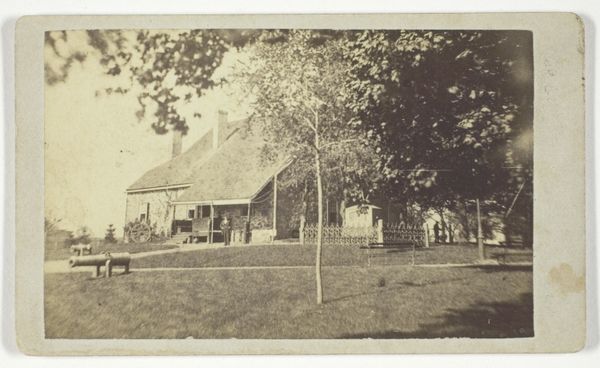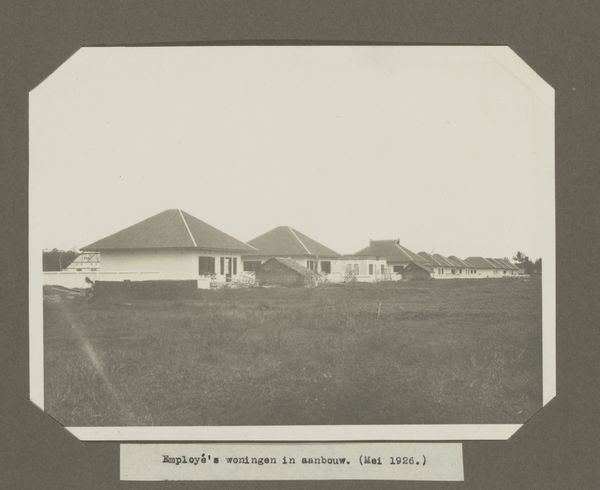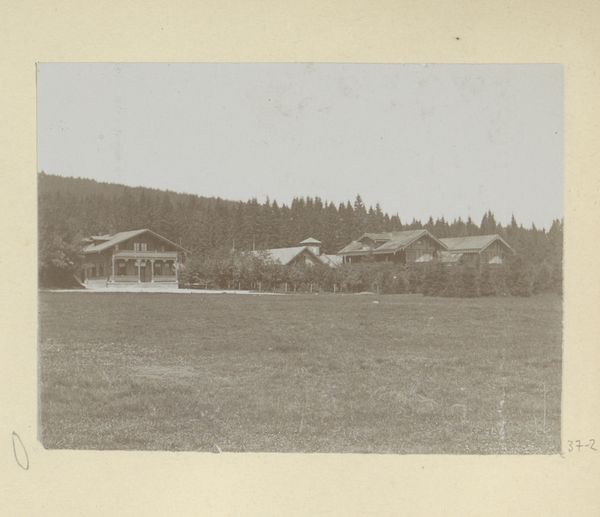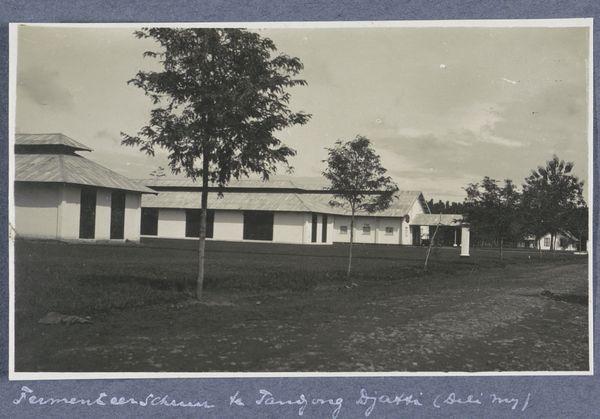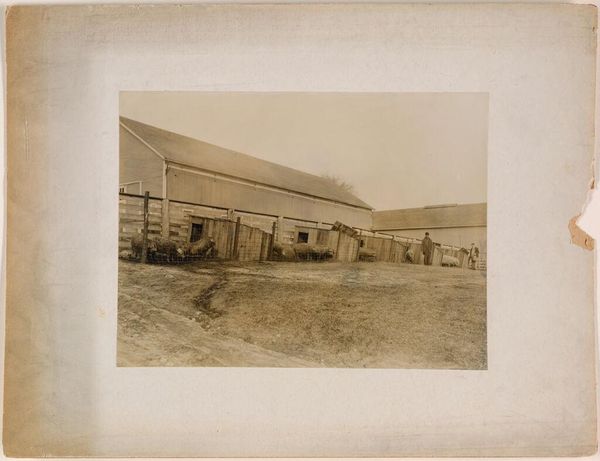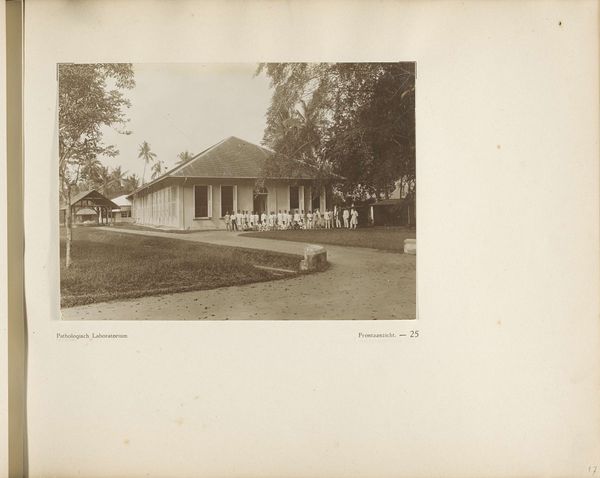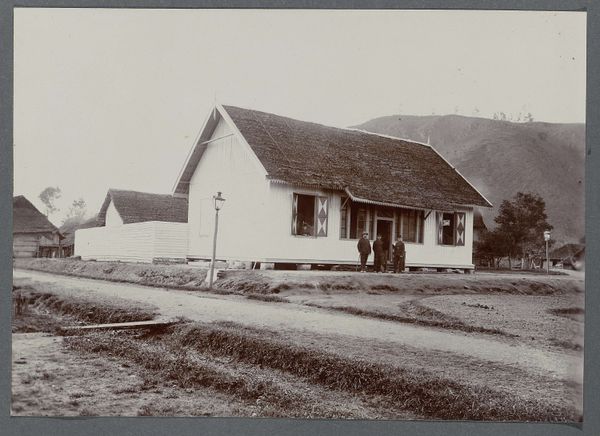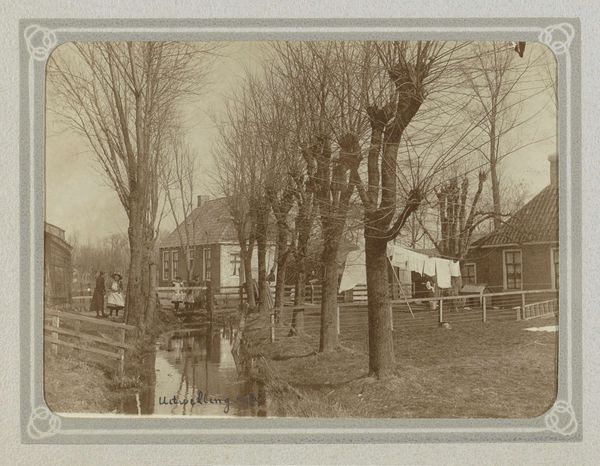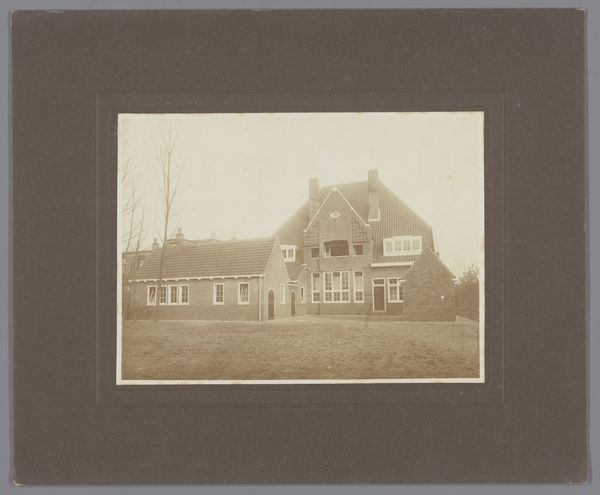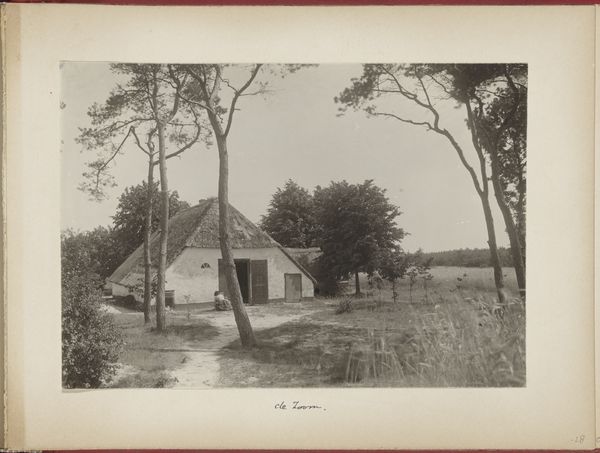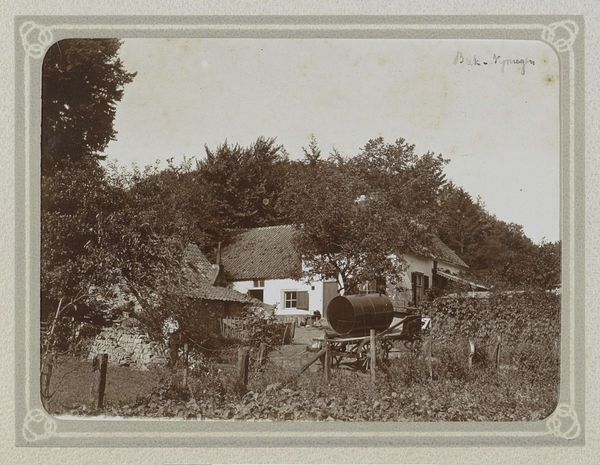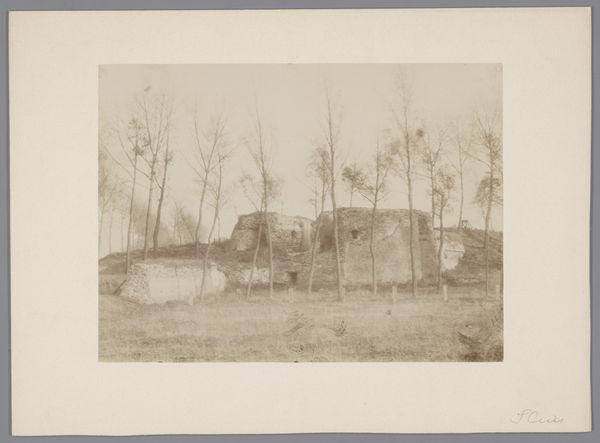
plein-air, photography
#
plein-air
#
landscape
#
photography
#
watercolor
Dimensions: height 80 mm, width 108 mm
Copyright: Rijks Museum: Open Domain
Curator: Welcome. We're looking at "Huizen in landelijke omgeving," a photograph believed to be captured by Hendrik Herman van den Berg sometime before 1894. It appears to be a plein-air composition. Editor: There's a melancholy to it, almost sepia-toned even though it’s probably just age. Feels like looking at a memory, a little faded around the edges, like grandma's old photographs. Curator: Indeed, that aged quality adds layers of interpretation. Considering the timeframe, this work invites us to reflect on representations of rural life in the late 19th century, perhaps juxtaposing romantic ideals against the realities of agrarian societies. We need to contextualize photography's development then and how it represented, or misrepresented, those outside dominant power structures. Editor: Oh, totally. It's tempting to get lost in the pretty landscape but yeah, you gotta remember who's doing the looking and from where. I keep thinking about the stories behind those houses. Were they idyllic homes, or were there social dynamics there, class struggles? The photograph gives us a glimpse, but also holds a lot back. Like a whisper of something hidden. Curator: Exactly! And it prompts essential questions about whose narratives are prioritized and the photographic gaze at this historical moment. Photography wasn't a neutral medium; its practitioners inevitably shaped their subject matter through the very act of representation. Even now, the choices they made – in composition, in lighting, in focusing on certain details and not others – tells a story, perhaps more revealing of themselves. Editor: Makes you wonder, doesn’t it? What did Van den Berg see when he snapped that picture? Was he consciously crafting a particular image, or was he just capturing what was in front of him? I mean, the contrast is so subtle, it makes the whole scene dreamlike. Curator: This piece, presented in that era, makes us question both its aesthetic and ethical dimensions. Its existence offers possibilities for deconstruction of not just photographic meaning, but rural representation within historical visual culture itself. It’s less about pretty countryside and more about the act of observing itself. Editor: True, it hits you subtly. You almost miss its point if you’re just glancing, you have to sit with the uncertainty of history itself and what the image is silently trying to say.
Comments
No comments
Be the first to comment and join the conversation on the ultimate creative platform.
